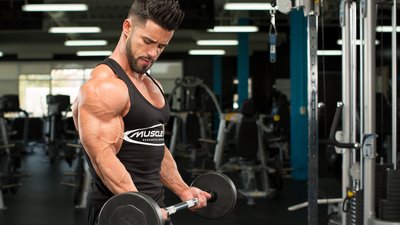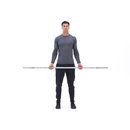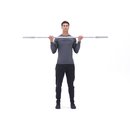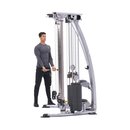Ask serious weight trainers which muscle groups they wish were bigger and it's a very safe bet that the biceps and triceps would win by a landslide. Who wouldn't want jagged-peaked biceps and ham-hock triceps bulging out of their skintight shirt sleeves?
But what are you doing to get those kinds of arms? Sure, you train them, but why haven't they been growing? Just as driving around aimlessly rarely gets you where you want to go, mindlessly working your arms with whatever random exercises and techniques pop into your head won't yield big gains—or big guns. You need a solid plan, and I've got just the thing.
Arm Workouts Come First
Improving a specific body part or muscle group is always a challenge when it just doesn't respond easily or hasn't responded with new growth in months—maybe years. Drastic measures must be taken, and the most effective solution is to give that area priority over the rest of your body.
So here's the plan: For 10 weeks, you'll work your arms directly twice every week. Day 1 will consist of a heavy arm workout, while Day 6 will feature higher reps, supersets, and rest-pause sets. You'll hit all the other muscle groups just once a week.
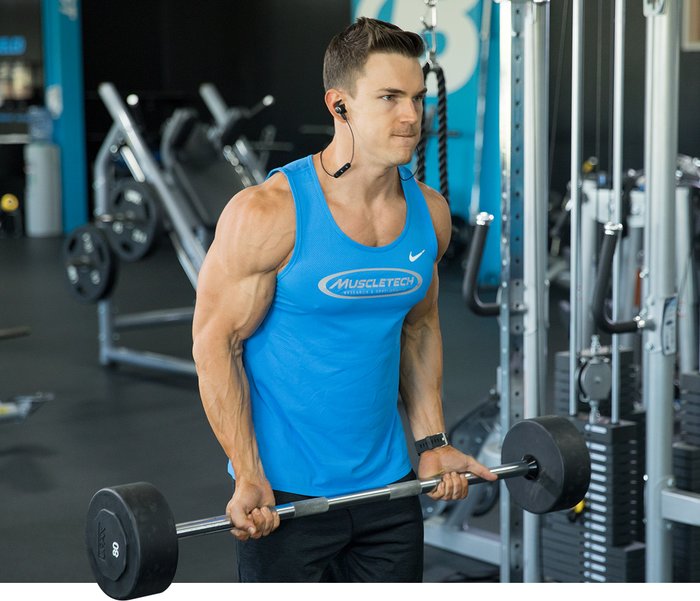
The plan only lasts 10 weeks because that's about how long it will take you to reach a point of diminishing returns. At that point, overtraining becomes increasingly likely, and with it the risk of losing instead of gaining arm size.
Weekly Workout Split
- Day 1: Arms (heavy)
- Day 2: Legs
- Day 3: Chest and Shoulders
- Day 4: Back
- Day 5: Rest
- Day 6: Arms (lighter and pumping)
- Day 7: Rest

BodyFit
$6.99/month- 2,500+ expert-created single workouts
- 3,500+ how-to exercise videos
- Detailed workout instruction
- Step-by-step workout tips
- Training at gym or at home
- Access to Workout Plans
- Access to Bodyfit App
- Store Discounts
Already have a Bodybuilding.com account with BodyFit? Sign In

What comes with BodyFit?

- Instructional Videos
Don't risk doing a workout improperly! Avoid injury and keep your form in check with in-depth instructional videos.

- How-to Images
View our enormous library of workout photos and see exactly how each exercise should be done before you give it a shot.

- Step-by-Step Instructions
Quickly read through our step-by-step directions to ensure you're doing each workout correctly the first time, every time.

BodyFit
$6.99/month- 2,500+ expert-created single workouts
- 3,500+ how-to exercise videos
- Detailed workout instruction
- Step-by-step workout tips
- Training at gym or at home
- Access to Workout Plans
- Access to Bodyfit App
- Store Discounts
Already have a Bodybuilding.com account with BodyFit? Sign In

What comes with BodyFit?

- Instructional Videos
Don't risk doing a workout improperly! Avoid injury and keep your form in check with in-depth instructional videos.

- How-to Images
View our enormous library of workout photos and see exactly how each exercise should be done before you give it a shot.

- Step-by-Step Instructions
Quickly read through our step-by-step directions to ensure you're doing each workout correctly the first time, every time.

How To Get The Most Out Of This Training
Use good form until you can't. Ironically, using both bad and good form can limit your gains.You can get the best of both worlds by using strict form in the first part of your sets, then loosening it up once you can no longer complete any reps in perfect form. In this approach, you're using "cheat reps" to extend the set past the limiting point of good from. As a result, you have a chance to work the muscles harder.
Lift quickly and lower slowly. To get the most from each rep, first do the concentric or lifting phase of the rep with explosive force to recruit high-threshold muscle fibers that have the highest potential for growth. Once you reach the midpoint of the exercise, squeeze or contract the muscle. As you do the eccentric, or lowering, phase, move the weight very slowly back into the starting position to increase the muscle's time under tension. Lifting quickly and lowering slowly, with a squeeze in between, has been shown to provide maximum muscle-growth stimulation.
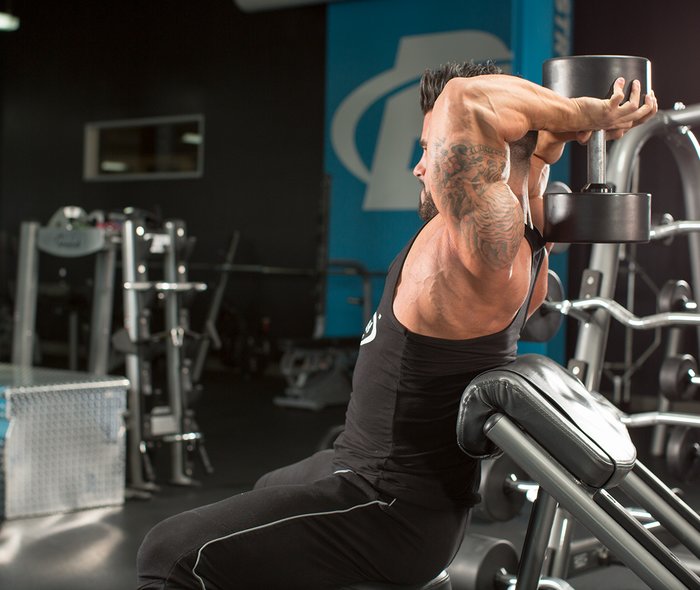
Eat and sleep well. Muscle growth does not occur in a vacuum. No matter how hard you train, your nutrition must support that growth. You need a steady supply of protein, carbohydrates, healthy fats, and water, consuming them every 2-3 hours of every waking moment in your day. Make sure your meals before and after workouts are rich in carbohydrates, so your muscles have glycogen to fuel the contractions and pumps, and to replace that glycogen you used for fuel during the workout. Also arrange your day to get the sleep you need. Everyone needs a different amount of sleep to function at their best.
Use supplements to enhance results. Food absolutely should be the foundation of your nutrition plan. There are, however, some extremely useful supplements that can help you in your pursuit of huge arms. First, use a good pre-workout formulato increase energy and focus—one that contains nitric-oxide promoting agents to get you a better pump. For your intra-workout, gorge your muscles on BCAAs and fast-acting carbs. To cap off your workout, use a post-workout shake that contains whey protein isolate to build muscle, along with more of those fast-acting carbohydrates that will replace lost glucose and jump-start the recovery process.
Stretch your bis and tris after every workout. All of our skeletal muscles, including the biceps and triceps, are encased in a tough connective tissue known as fascia. Over the years, thousands of bodybuilders have found that aggressively stretching the muscle while fully pumped seems to loosen up the fascia and allow more growth to take place.
To stretch the biceps fascia, grab a racked barbell from behind and lean forward until you feel the biceps fully stretched. Hold this position for 30 seconds for the first 5 weeks of the program, then 45-60 seconds for the final 5 weeks. For triceps, hold a dumbbell with both hands up and behind your head with your elbows fully bent. You can also attach a short bar or rope attachment to a high pulley behind you and lean forward into the stretch. Use the same time limits as you did with the biceps.
Treat every workout like a last chance. Halfway efforts yield halfway results, so apply your full concentration and intensity into every rep of every set you do in the coming 10 weeks. Unless you're a parent of a young child or have a job that requires you to be on call at all times, keep your smartphone in your locker while you train. Don't get into socializing; get to work.
Give your arms no choice. Ten weeks is not a long time in the grand scheme of things. It's certainly not much time to cause substantial muscle growth—under typical circumstances, that is. That's why you're about to embark on a program that hits your arms in ways they aren't accustomed to, with more volume and greater frequency combined with different rep ranges and styles of tension. Faced with these kinds of stimulation, your arms will have no choice but to grow!
The Shock Factor
If you decide you love the results so much you want to go through the program again, wait at least 10 weeks before you start. This program works so well because it totally shocks your arms. That shock factor is imperative to the program's success—but it also means you've got to give your arms a break afterward. In the meantime, get started and prepare to watch your arms blow the hell up!


